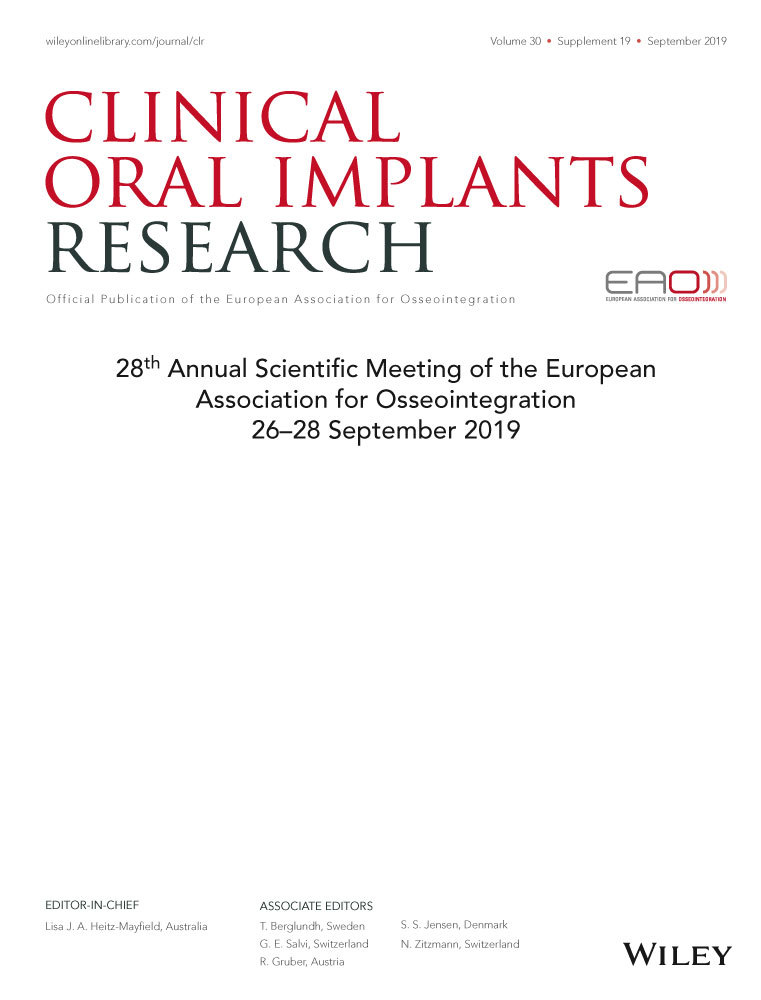Clinical performance of short implants placed in the molar-premolar region – A 2-year retrospective study
15520 Poster Display Clinical Research – Peri-implant Biology
Background
Recently, the use of short implants in anatomically restricted regions has been attracting the attention of many clinicians around the world, as it represents an excellent minimally-invasive treatment option. Nevertheless, when selecting short implants the prevalence of peri-implant bone resorption still remains to be elucidated. The DENTSPLY ASTRATECH IMPLANT EV SYSTEM used in this study is a system in which the operator is able to select the drilling protocol according to the bone quality.
Aim/Hypothesis
We aim to analyze the clinical benefits of short implants (6 mm) and at the same time we believe that the key to minimizing bone resorption is to obtain an appropriate initial stability taking into account the placement torque and at the same time by optimizing the bone quality and drilling protocol.
Material and Methods
Twenty-six 6 mm short implants (DENTSPLY ASTRATECH IMPLANT EV SYSTEM) were placed in 16 patients. Among the 16 patients, 7 were treated with 6 mm implants in multiple sites. Bone quality, drilling protocol together with the placement torque were recorded. Then, changes in the degree of bone resorption, and the state of the peri-implant mucosal sulcus were measured from the time of delivery of superstructures to 2 years after setting. Of the twenty-six implants, ten were inserted in the maxilla and sixteen were inserted in the mandible. The diameter of nineteen implants was 4.2 mm and that of seven implants was 4.8 mm, all of straight type.
Results
Bone quality of all the alveolar processes was type I for 3, type II for 8, and type III for 15. The mean placement torque was 34.2 Ncm. (Standard deviation [SD]: 8.16, range [r] 20 to 45 Ncm). The retention type of the superstructures was cement-retained for six implants (1 single crown, 5 splinted crowns), and screw-retained for twenty implants(6 single crowns and 14 splinted crowns). During the 2 years of follow-up after setting the superstructures, all implants were stable. The mean mesial Bone Level (BL) at the superstructure setting time was −0.05 mm. (SD: 0.62, r: −1.33 to 1.73 mm), the mean distal BL was 0.37 mm (SD: 0.74, r: −0.63 to 2.26 mm). The mean mesial BL after 2-years was 0.33 mm (SD: 0.65, r: −0.96 to 1.52 mm), the mean the distal BL was 0.53 mm (SD: 0.63, r: −0.5 to 2.23 mm). The mean BL differences between the setting time and after 2-years were 0.38 mm on the mesial side (SD: 0.49, r: −0.25 to 1.88 mm) and 0.15 mm in the distal side (SD: 0.42, r: −0.98 to 84 mm).
Conclusion and Clinical Implications
In this retrospective study, we examined the clinical peri-implant tissue stability after placing 6 mm implants. Measurement of peri-implant bone levels showed that in most cases the bone-implant junction moved coronally. This phenomenon appeared to have resulted from continuous bone remodeling. There were no significant differences in bone levels variations depending on region, superstructure extension or retention-type. This suggests that short implants are beneficial in clinical practice.




